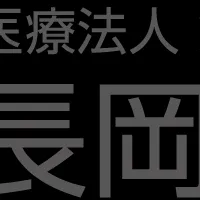
The Growing Kratom Extract Market: Insights and Trends for 2025 and Beyond
Overview of the Kratom Extract Market
The Kratom Extract Market is rapidly evolving and is set to achieve remarkable growth, with projections indicating an expected increase from $143.6 million in 2023 to approximately $268.9 million by 2030. This impressive growth rate of 7.8% CAGR highlights the increasing interest in natural health supplements and alternative therapies among consumers.
Market Segmentation
Kratom extracts can be categorized by type, including liquid, powder, capsules, and gummies. Additionally, the market is divided into sales channels such as offline and online platforms. The rise of e-commerce in this sector has enabled consumers to access a broad range of products quickly and conveniently, significantly impacting market dynamics.
Key Growth Drivers
Several factors are driving the expansion of the Kratom Extract Market:
1. Consumer Interest in Natural Supplements: As preferences shift towards natural health solutions, kratom extracts are increasingly recognized as beneficial for pain management, mood enhancement, and overall wellness.
2. Product Diversification: Manufacturers are responding to diverse consumer needs by offering various product formulations, ensuring that there's something for everyone—whether capsules, powders, or ready-to-use liquids.
3. Online Sales Growth: The accessibility of online platforms has empowered consumers to purchase kratom products from the comfort of their homes, enhancing market growth. Online sales channels accounted for about 35.6% of total revenue in 2023.
4. Enhanced Consumer Education: With growing awareness and knowledge about kratom, many potential users are better informed about its benefits and uses, leading to increased demand.
Notable Trends in the Market
- - Segment Growth: Liquid kratom extracts are gaining popularity due to their high bioavailability and rapid absorption. This formulation allows users to easily manage dosages, making it particularly attractive for those seeking precise control over their intake.
- - Powdered Kratom: The powdered form remains favored as it is stable and easily integrated into various products, appealing to consumers who prefer a hands-on approach to their supplementation.
- - Regulatory Environment: The development of regulatory frameworks that support safe kratom use is crucial. Clear guidelines impact the safety and efficacy of products, fostering trust among consumers.
Challenges Ahead
Despite the opportunities, the market faces challenges, such as varying regulations across regions. In territories where regulations are ambiguous or restrictive, market growth may be slower. However, in regions with standardized guidelines, manufacturers can thrive.
Product Quality Assurance
As consumers become increasingly discerning about the health products they choose, there is a growing emphasis on the quality and purity of kratom extracts. Manufacturers that adhere to stringent quality control measures and seek third-party certifications are likely to gain consumer trust and foster brand loyalty.
Conclusion
The Kratom Extract Market is positioned for robust growth, driven by a combination of rising consumer interest in natural remedies, increasing product offerings, and the convenience of online shopping. As this market continues to evolve, stakeholders who prioritize quality, consumer education, and diversification will thrive in this flourishing industry. Brands like MIT45, VivaZen, and Happy Hippo are among the key players shaping the future landscape of kratom extracts, reflecting the industry's competitive nature and promising potential for innovation.
As we look to 2025 and beyond, the trends identified here suggest that the Kratom Extract Market will not only expand in size but will also become a significant segment within the broader health and wellness industry, inviting both consumers and manufacturers to engage with this versatile and expanding market.
Topics Health)










【About Using Articles】
You can freely use the title and article content by linking to the page where the article is posted.
※ Images cannot be used.
【About Links】
Links are free to use.